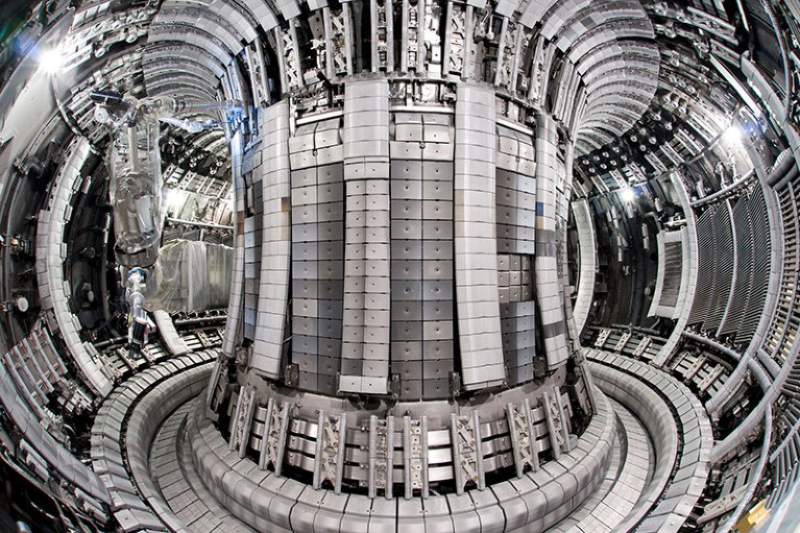World Record for Nuclear Fusion Broken in Significant Achievement

British scientists said on Thursday that, in the last trial utilizing the Joint European Torus (JET) machines, they had broken the record for producing fusion energy.
The sun produces heat using the same process known as nuclear fusion. Proponents think that by offering a plentiful, secure, and clean energy source, it could eventually aid in combating climate change.
According to the UK Atomic Energy Authority (UKAEA), a team at the JET facility near Oxford in central England produced 69 megajoules for five seconds using 0.2 milligrams of fuel, surpassing the previous record established in 2022 by 10 megajoules.
About 41,000 houses could be powered by it for five seconds.
This is the last experiment that will be carried out at the JET site with a tokamak, a machine that resembles a doughnut.
“JET has operated as close to power-plant conditions as is possible with today’s facilities, and its legacy will be pervasive in all future powerplants,” stated Ian Chapman, CEO of the UKAEA.
“JET’s research findings have critical implications not only for ITER – a fusion research mega-project being built in the south of France – but also for … other global fusion projects, pursuing a future of safe, low-carbon, and sustainable energy,” he stated.
Over 40 years, more than 300 scientists and engineers from EUROfusion—a partnership of European researchers—contributed to JET’s historic experiments.
To make plasma, 0.1 milligrams of each of the hydrogen isotopes deuterium and tritium—which are heated to temperatures ten times hotter than the sun’s core—were placed inside JET’s tokamak.
Magnets were used to hold this mixture in place while it spun, fusing and releasing a great amount of energy in the form of heat.
Because it is unable to initiate a runaway process, fusion is intrinsically safe.
While tritium can be extracted as a byproduct of nuclear fission, deuterium is readily available in seawater.
It releases almost four million times more energy with equivalent weights than burning coal, oil, or gas, yet the only waste product is helium.
JET did not produce more energy than was required to produce it, despite setting a new record.
Using a different method employing lasers, the United States’ Lawrence Livermore National Laboratory became the sole establishment to accomplish this feat—the holy grail of nuclear fusion—in late 2022.
In 1997, JET carried out its inaugural deuterium-tritium experiments.
The findings, which were made public on Thursday, showed that fusion could be produced for five seconds, as any longer would have led to an overheating of JET’s copper wire magnets.
Superconductor electromagnets, which ITER will be outfitted with, should enable the process to last for more than 300 seconds.
By 2050, a fusion power plant prototype might be available, if all goes according to plan at ITER.
Because fusion energy cannot be weaponized, unlike nuclear fission utilized in atomic power plants, international cooperation on the subject has historically been close.
China, the EU, India, Japan, South Korea, Russia, and the US are also involved in the massive initiative, which is located in France.